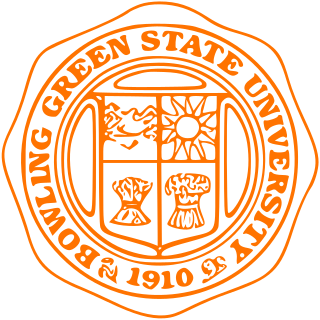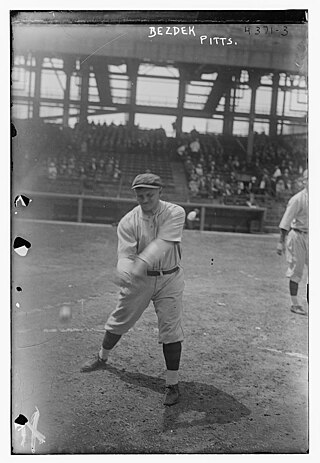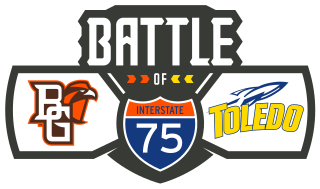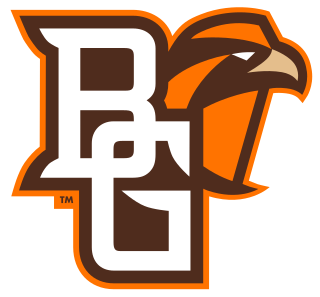
Bowling Green State University (BGSU) is a public research university in Bowling Green, Ohio. The 1,338-acre (541.5 ha) main academic and residential campus is 15 miles (24 km) south of Toledo, Ohio. The university has nationally recognized programs and research facilities in the natural and social sciences, education, arts, business, health and wellness, humanities and applied technologies. The institution was granted a charter in 1910 as a normal school, specializing in teacher training and education. The university has developed from a small rural normal school into a comprehensive public research university. It is a part of University System of Ohio and classified among "R2: Doctoral Universities – High research activity".

The Tennessee Volunteers and Lady Volunteers are the 20 male and female varsity intercollegiate athletics programs that represent the University of Tennessee in Knoxville, Tennessee. The Volunteers compete in Division I of the National Collegiate Athletic Association (NCAA) as a member of the Southeastern Conference (SEC). In January 2021, Danny White was introduced as the Volunteers' Director of Athletics.
The Syracuse Orange are the athletic teams that represent Syracuse University. The school is a member of NCAA Division I and the Atlantic Coast Conference. Until 2013, Syracuse was a member of the Big East Conference.
Savage Arena is a multi-purpose arena located in Toledo, Ohio, on the campus of the University of Toledo.

The Glass Bowl is a stadium in Toledo, Ohio. It is primarily used for American football, and is the home field of the American football team of the University of Toledo Rockets. It is located on the school's Bancroft campus, just south of the banks of the Ottawa River. Known for its blend of old and new, it retains the traditional stonework around the field throughout all its expansions.

The Houston Cougars are the athletic teams representing the University of Houston. Informally, the Houston Cougars have also been referred to as the Coogs, UH, or simply Houston. Houston's nickname was suggested by early physical education instructor of the university and former head football coach, John R. Bender after one of his former teams, Washington State later adopted the mascot and nickname. The teams compete in the NCAA's Division I and the Football Bowl Subdivision as members of the Big 12 Conference.

Hugo Francis Bezdek was a Czech American athlete who played American football and was a coach of football, basketball, and baseball. He was the head football coach at the University of Oregon, the University of Arkansas (1908–1912), Pennsylvania State University (1918–1929), and Delaware Valley College (1949). Bezdek also coached the Mare Island Marines in the 1918 Rose Bowl and the Cleveland Rams of the National Football League (NFL) in 1937 and part of the 1938 season. In addition, Bezdek coached basketball at Oregon and Penn State (1919), coached baseball at Arkansas (1909–1913), Oregon (1914–1917) and Penn State (1920–1930), and served as the manager of Major League Baseball's Pittsburgh Pirates (1917–1919). He was inducted into the College Football Hall of Fame as a coach in 1954.

The Bowling Green–Toledo football rivalry is annual college football rivalry game between Mid-American Conference members Bowling Green State University (BGSU) and the University of Toledo (UT). The universities are separated by about 25 miles (40 km) along Interstate 75 (I-75). The Bowling Green Falcons and Toledo Rockets have exchanged two traveling trophies; the Peace Pipe Trophy (1980–2010), and the Battle of I-75 Trophy (2011–present). Toledo currently leads the series 42-41-4.

The Tennessee Volunteers football program represents the University of Tennessee (UT).

The Bowling Green Falcons are the intercollegiate athletic teams that represent Bowling Green State University (BGSU), in Bowling Green, Ohio, United States. The Falcons compete in the National Collegiate Athletic Association (NCAA) at the Division I level as a member of the Mid-American Conference (MAC) East Division. The men's ice hockey team competes in the Central Collegiate Hockey Association (CCHA); and men's soccer competes in the Missouri Valley Conference (MVC), following the MAC shutting down its men's soccer league at the end of the 2022 season. Bowling Green sponsors teams in seven men's and 11 women's NCAA-sanctioned sports and the football team competes in the Football Bowl Subdivision (FBS), the highest level for college football. BGSU is one of only 15 universities in the United States that plays Division I FBS football and Division I men's ice hockey.

The Florida Atlantic Owls are the athletics teams of Florida Atlantic University. The Owls participate in the National Collegiate Athletic Association (NCAA)'s Division I as members of the American Athletic Conference. On October 21, 2021, Florida Atlantic accepted the invitation to join The American and became a full member on July 1, 2023.

The Bowling Green Falcons football program is the intercollegiate football team of Bowling Green State University. The team is a member of the NCAA, playing at the Division I Football Bowl Subdivision, formerly Division I-A, level; BGSU football competes within the Mid-American Conference in the East Division. The Falcons have played their home games in Doyt Perry Stadium since 1966. The stadium holds 24,000 spectators. In their 93-year history, the Falcons have won 12 MAC championships and a College Division national championship – as voted by the UPI in 1959. The head coach is Scot Loeffler.

Peruna is the official mascot and fight song of the Southern Methodist University (SMU) Mustangs, named after Peruna, a popular patent medicine. The name "Peruna" is given to each successive live mascot. The mascot debuted in 1932, and since then a black Shetland pony, Peruna, has been present at every SMU home football game except for one. The costumed mascot is also referred to as "Peruna." Peruna was selected the #10 Best College Mascot by America's Best and Top Ten in 2009.

The Toledo Rockets football team is a college football program in Division I FBS, representing the University of Toledo. The Rockets compete in the Mid-American Conference. Toledo began playing football in 1917, although it did not field teams in 1931, and 1943–1945. Since the inception of the AP Poll in 1936 Toledo has finished in the Top 25 four times. Its highest finish came in 1970 when it ranked No. 12 after finishing 12–0–0. The University of Toledo has a 11–9 record in bowl games. The Rockets were the 2017 MAC champions. The team's head coach is Jason Candle.

The Arkansas State Red Wolves are the athletic teams of Arkansas State University. They are a member of the Sun Belt Conference in all sports except women's bowling, a sport not sponsored by that league, competing at the National Collegiate Athletic Association (NCAA) Division I level. As of the next NCAA bowling season in 2023–24, the bowling team will compete in Conference USA, which absorbed the single-sport Southland Bowling League after the 2022–23 season.

The UT Arlington Mavericks are the athletic teams that represent the University of Texas at Arlington in Arlington, Texas. The Mavericks currently compete in the NCAA Division I Western Athletic Conference in 15 varsity sports. The number rose to 15 in the fall of 2017 women's golf began their first season of competition that athletic season.

The University of Toledo is a public research university in Toledo, Ohio. It is the northernmost campus of the University System of Ohio. The university also operates a 450-acre (180 ha) Health Science campus, which includes the University of Toledo Medical Center, in the West Toledo neighborhood of Toledo; a 160-acre (65 ha) satellite campus in the Scott Park neighborhood of Toledo; the Center for the Visual Arts is located in downtown Toledo at the Toledo Museum of Art; and a research and education facility, known as the Lake Erie Center, at Maumee Bay State Park.
The 1990 Toledo Rockets football team represented the University of Toledo during the 1990 NCAA Division I-A football season. The Rockets were led by first-year head coach Nick Saban, and competed as a member of the Mid-American Conference (MAC). They finished the season with a record of nine wins and two losses and as MAC co–champions with Central Michigan.
The 1971 Toledo Rockets football team was an American football team that represented the University of Toledo in the Mid-American Conference (MAC) during the 1971 NCAA University Division football season. In their first season under head coach Jack Murphy, the Rockets compiled a 12–0 record, outscored all opponents by a combined total of 383 to 96, and won the Mid-American Conference (MAC) championship. The season ended with a 28–3 victory over Southern Conference champion Richmond in the 1970 Tangerine Bowl. The Rockets were ranked No. 14 in the final AP Poll and No. 13 in the final UPI Poll.
The 1981 San Jose State Spartans football team represented San Jose State University during the 1981 NCAA Division I-A football season as a member of the Pacific Coast Athletic Association. Led by third-year head coach Jack Elway, they played home games at Spartan Stadium in San Jose, California.

















